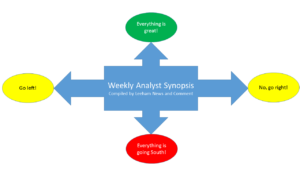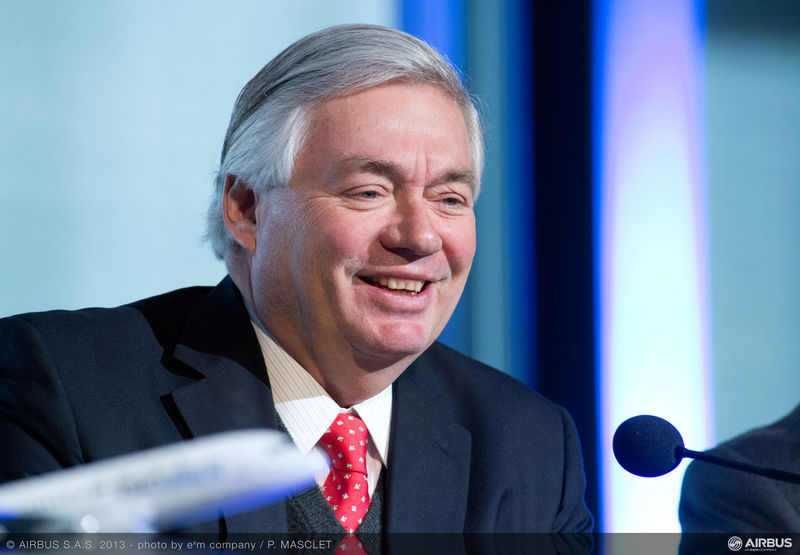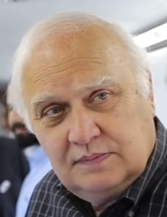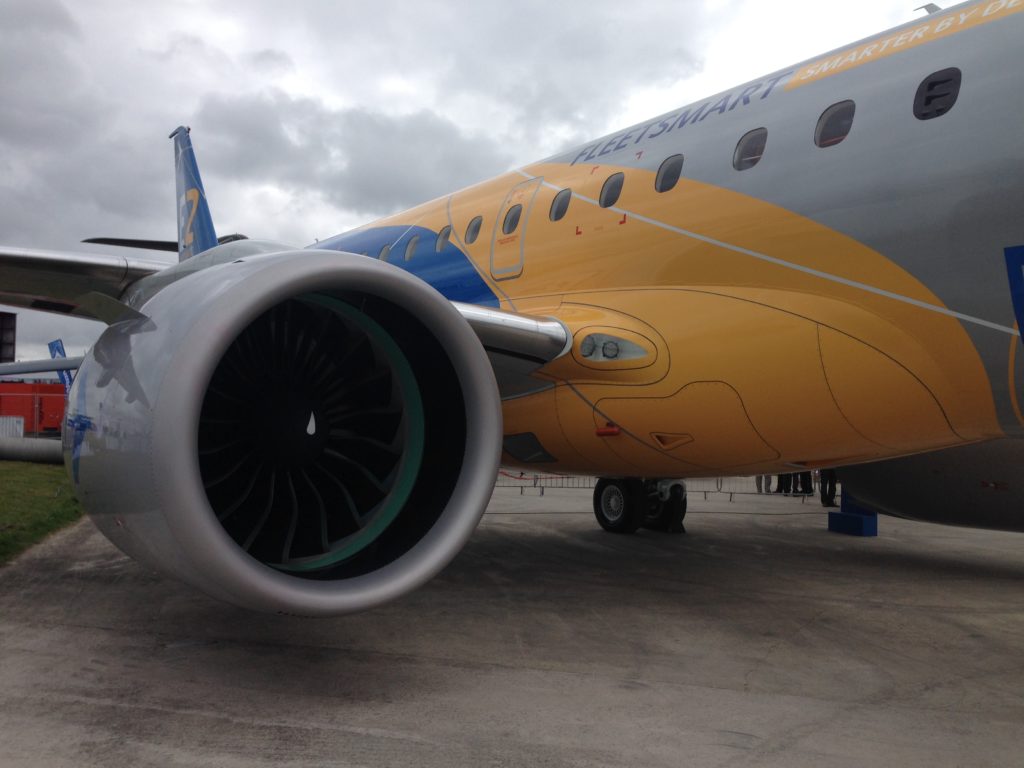Leeham News and Analysis
There's more to real news than a news release.
Pontifications: Boeing softens 747-8F recovery
July 25, 2016, © Leeham Co.: Boeing July 21 announced it is taking an after tax charge of more than $800m against the 747-8 program. It also canceled plans to increase production of the 747-8F from the current 0.5/mo to 1/mo in 2019 on the long-held belief demand for the 8F would recover as 747-400Fs age.
In an email to LNC, a Boeing Commercial Airplanes spokesman wrote, “We have consistently said that while there is a cargo market recovery – it is not as robust as we had expected. Our new long term forecast projects cargo traffic to grow at 4.2% per year over the next two decades. But in the short term, the cargo market continues to struggle.
“The 747-8 is closely tied to the cargo market. There is an opportunity starting around 2019 when many 747-400 Freighters will be retired. Some of that replacement could go to the 747-8F, some to 777F, but some of those airplanes won’t be replaced at all. The decision we announced reduces future risk for the program and the company– and allows us to see how that replacement cycle plays out.”
With that, years of forecasts of a solid recovery for the 747-8F that ran counter to many outside Boeing was softened considerably.
Boeing announces $2bn in new charges
 July 21, 2016, © Leeham Co.: Boeing today announced $1.66bn in new after tax charges to its 787 and 747-8 commercial programs and a $393m after tax charge for its KC-46A USAF tanker program.
July 21, 2016, © Leeham Co.: Boeing today announced $1.66bn in new after tax charges to its 787 and 747-8 commercial programs and a $393m after tax charge for its KC-46A USAF tanker program.
“On a pretax basis at the segment level, Boeing Commercial Airplanes will now record an earnings impact totaling $2.78 billion and the Boeing Military Aircraft segment of Boeing Defense, Space & Security will report an earnings impact of $219 million,” Boeing said in a statement.
Boeing also announced that a planned production rate increase for the 747-8 from 0.5/mo to 1/mo in 2019 has been cancelled.
Boeing KC-46A completes Milestone C
July 20, 2016, © Leeham Co.: Boeing and the USAF last week announced that the KC-46A tanker successfully completed Milestone C in the refueling flight testing program.
The KC-46A completed refueling of five aircraft, a requirement under Milestone C: the F16, F18, AV8B Harrier, A10 Warthog and the C17. Additionally, the KC-46A itself was refueled from a Boeing KC-10.
The C17 previously proved to be a problem when aerodynamics for the refueling boom revealed more stress than was permissible.
Weekly analyst synopsis: Farnborough recap
 July 20, 2016: Aerospace analysts had somewhat different takes on the commercial aviation portion of the Farnborough Air Show. This week’s analyst synopsis includes some of the analyst reports. Between now and the end of the month, earnings season begins reporting the second quarter results. Airbus reports July 27. So does Boeing. Bombardier and Embraer report after July.
July 20, 2016: Aerospace analysts had somewhat different takes on the commercial aviation portion of the Farnborough Air Show. This week’s analyst synopsis includes some of the analyst reports. Between now and the end of the month, earnings season begins reporting the second quarter results. Airbus reports July 27. So does Boeing. Bombardier and Embraer report after July.
Farnborough redefines the MOM sector
 July 19, 2016, © Leeham Co.: If anything came out of the otherwise dull Farnborough Air Show, it was that the Middle of the Market airplane debate is as muddled as ever.
July 19, 2016, © Leeham Co.: If anything came out of the otherwise dull Farnborough Air Show, it was that the Middle of the Market airplane debate is as muddled as ever.
Boeing didn’t launch, or even say much, about the prospective 737-10, a slightly larger version of the MAX 9 intended to close the gap between the 9 and the Airbus A321neo. Boeing illustrates the 737-8-based MAX 200 as a separate model in its product line up. The 737-10 will slot in above the MAX 200, if built.
Boeing increased the demand in its 20-year Current Market Outlook for the small, twin-aisle airplane by 5%–a move Airbus claims is aimed at the Boeing Board of Directors to entice it to approve launch of the New Mid-range Aircraft, or NMA as Boeing now calls the MOM aircraft.
![]() Airbus said the MOM sector ends at 240 seats (single class) and only a single-aisle airplane makes sense. This is a shift from long-standing messaging that the A321neo covers the lower end of the MOM sector and the A330-200/800 covers the upper end. This message was advanced as recently as the Airbus Innovation Days at the end of May.
Airbus said the MOM sector ends at 240 seats (single class) and only a single-aisle airplane makes sense. This is a shift from long-standing messaging that the A321neo covers the lower end of the MOM sector and the A330-200/800 covers the upper end. This message was advanced as recently as the Airbus Innovation Days at the end of May.
With the rhetoric changing a bit, is it time to redefine the MOM sector?
Airbus’ Leahy shifts a bit on MOM aircraft
Introduction
Subscription Required

John Leahy, Airbus COO-Customers. Airbus photo.
July 14, 2016, © Leeham Co., Farnborough Air Show: Basking on an order for 30 A321LRs on the final day of the Farnborough Air Show, Airbus’ top salesman said the Middle of the Market sector stops at 240 passengers and it’s best served by a single-aisle aircraft.
John Leahy, Chief Operating Officer-Customers, said twin-aisle aircraft down to 240 or even 220 passengers don’t work economically against a single aisle. The A321LR (Long Range) seats a maximum of 240 passengers and it is single-aisle. Even though Airbus has a 250-seat A330-200R (Regional) and an A330-800 (7,200nm-plus range), Leahy didn’t attempt make a case that these aircraft are suitable for the MOM sector.
Summary
- A 767-200/A310 size replacement isn’t viable.
- Boeing’s 20-year market forecast for the mid-sized twin-aisle is for consumption for the Board of Directors.
- The A330-200R and A330-800 aren’t good MOM aircraft.
Pontifications: Airbus faces conundrum
July 18, 2016, © Leeham Co.: It wasn’t the dominating headline out of the Farnborough Air Show that Airbus would have preferred: a dramatic production rate cut for the slow-selling A380 from 20/yr to 12/yr from 2018.
A leak to the Paris newspaper La Tribune last Tuesday evening forced Airbus to announce the rate cut minutes later, ahead of prepping its employee work force. It was also ahead of an investors analyst breakfast meeting the following day in London. The event’s headlines would have been Tuesday’s unexpectedly strong number of Airbus orders after a dismal Monday for Airbus and Boeing. Instead, the rate cut dominated analysts’ thinking ahead of the breakfast.
Airbus stock closed at 52.53 Euros on the Paris stock exchange Tuesday before La Tribune’s story posted at 7pm. The stock was essentially flat the next day upon opening.
747F demand will come back, says Boeing

Randy Tinseth, VP Marketing, Boeing Commercial Airplanes. Photo via Google Images.
Subscription Required
Update, July 22, 2016: Boeing yesterday announced it is taking an after tax charge of more than $800m against the 747-8 program. It also cancelled plans to increase production of the 747-8F from the current 0.5/mo to 1/mo in 2019 on the long-held belief demand for the 8F would recover as 747-400Fs age.
July 13, 2016, © Leeham Co., Farnborough Air Show: Boeing steadfastly believes the demand for its iconic 747 freighter will recover after years of slow orders and declining production rates.
Randy Tinseth, VP Marketing, told LNC years of missed targets for main deck freighter demand in its annual Current Market Outlook come down to the global softness in air cargo trading.
“It’s all about trade in air cargo,” says Tinseth. “The one thing we’ve seen in the last five years regarding growth and trade, if you look at 2010, it came back very strongly. We saw trade growth. In 11 and 12 and the first part of 13, we saw growth very quiet in terms of trade. Then in the back half of 13-14 and into 15, we saw trade grow at 5%. Guess what? The cargo market came back and grew at 5%.




 A380 and investors meeting: The Airbus A380 has been a sensitive topic for investors. Historically stock prices took a major hit when negative news about the A380 emerged. During an investors day in December 2014, one of the executives slipped that the program could be terminated. The stock took an immediate dive and other executives had to clean up the first one’s comments.
A380 and investors meeting: The Airbus A380 has been a sensitive topic for investors. Historically stock prices took a major hit when negative news about the A380 emerged. During an investors day in December 2014, one of the executives slipped that the program could be terminated. The stock took an immediate dive and other executives had to clean up the first one’s comments.
